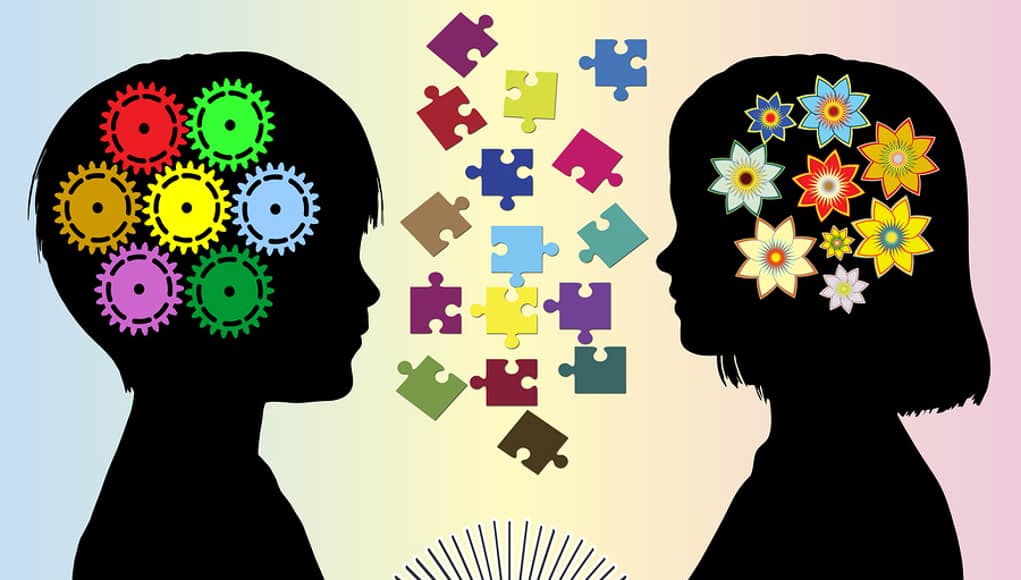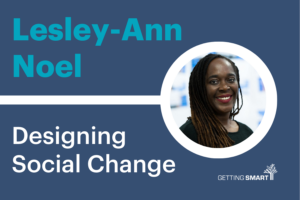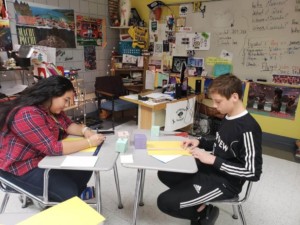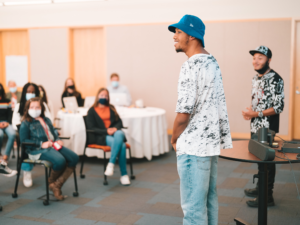Creating Change-Agents: The Intersection of Critical Thinking and Student Agency

By Jenny Pieratt
The desire to foster critical thinking in our students is nothing new to the field of education; in fact the ambition to teach humans to think deeply dates back to early thinkers such as Aristotle, who once said: “It is the mark of an educated mind to be able to entertain a thought without accepting it.” As we push further into the 21st century we have rekindled the aspiration to develop critical thinkers who can solve complex problems and make changes.
Longitudinal studies have confirmed our fears that critical thinking as an “intellectual and practical skill seems to be a skill that the majority of students coming into higher education and the workforce are not only lacking in function, but also in understanding what the concept is.”
As educators we know that in order to develop the next generation with the skills to innovate and improve our world we can no longer teach students what to think–we must teach them how to think.
A Promising Framework for Critical Thinking
In 2013, the Hewlett Foundation published the first set of competencies that address the skills and demeanors of Deeper Learning. The Deeper Learning Competencies consist of six proficiencies that serve as a framework for educators looking to develop higher order thinking and design and facilitate engaging learning experiences.
One of these competencies provides a “north star” for how to foster active problem solvers by what Hewlett has termed “thinking critically and solving complex problems.” The eight descriptors within this specific competency pave the road for journeying toward our “north star” through skills such as identifying data, using tools of a specific discipline, constructing hypotheses and arguments, and displaying persistence.
This framework also provides a unique and important intersection between two interdependent skills: critical thinking and student agency. Student agency is best described by the body of research by Carol Dweck and Eduardo Briceno, and most easily digestible in the assessment tool descriptors created by New Tech Network in a partnership with SCALE.
Put simply, agency is the ability of a student to display a growth mindset, grit and ownership over their learning. Arguably, the ability to digest and analyze information critically is only important if a student can persevere through the challenges associated with the journey of thinking critically, and can then act upon this newfound knowledge in a way that brings meaning to the world around them.
So How Do We Do It?
We must explicitly teach the skills of critical thinking and agency in conjunction with one another. This requires having an ultimate vision for what we hope for students in the realm of these competencies and then scaffolding these skills through intentional exercises and activities that serve as building blocks.
We can go about this important work by doing the following:
Value the process alongside the content
Too often we are focused strictly on content outcomes and put off teaching skills such as critical thinking and agency. If in the future we are going to unleash change-agents in our world then we must put in the time now to develop student skill-sets by honoring the process of learning and growing. While it may feel as though this focus on skills is an additive to our content, it is actually something that can happen through the content we teach. Through lines of inquiry and reflection, we can teach students to “go meta” by asking them to think about their thinking in the moment, or directly after they complete a task.
Once we do this we can begin to shift the weight of expectations and assessments more heavily on a student’s ability to identify how they went about their work and provide logical and thoughtful explanations for how they arrived at an answer. This process allows us to better understand student thinking and also requires students to think more deeply about the content and themselves as a learner.
Help Develop Students’ Toolboxes
Every student has a toolbox–a series of techniques and resources available to them-and it is the job of us as teachers to help each child to develop an awareness of what tools are currently inside of that box, what tools they can add to their toolbox, and when and how to leverage those tools.
For a student to truly lead their own learning, they must first be able to reflect on themselves as a learner. What strengths do they possess? What techniques do they have in their repertoire? And what resources do they bring to their learning? This phase of self-exploration often happens early in the school year, never to be revisited again. We must continue this process of self-discovery throughout the course of the school year so that students are constantly reflecting upon what they know and can do, how they hope to grow and who and what is available to help them be successful.
Build student mindset muscles
Thanks to the work of Carol Dweck, we know that the brain is a muscle. So if we are going to build that muscle, then we must do reps of reflection. While every teacher will share that they feel strapped for time, there is an incredible value to building in “pause-points” throughout the day, week or unit. By asking students to think about their thinking we are helping them to know themselves as a learner and also we are helping them to identify “sticking points.”
From here we can begin to support them not only by allowing them to better anticipate challenges but also how to support them in their ability to tackle these problems when they arise in the future. This skill set is critical to student agency because it enables students to persist in the face of challenging work that we are asking them to think through; again highlighting that critical thinking and agency work must work in tandem.
While this task may feel overwhelming to many teachers, it can be broken down into small tasks such as journal entries during warm-ups, exit tickets, think-pair-share debriefs or content assignments that include student reflections.
Moving Through The Challenges
Navigating the intersection between content and skills truly requires teachers to be designers of their curriculum, to have autonomy to rethink what teaching and learning can look like in their classroom, coupled with the support to take up this work. This will require a collective effort from teacher education programs, professional development opportunities and support structures that allow teachers to collaboratively tackle these challenges.
As we move forward we must remain aware of our collective responsibility to prepare our students to solve complex problems, many of which are problems we cannot currently anticipate. However, if we can develop a sense of self and ownership amongst our students we can trust that, coupled with critical thinking skills, our future will be in good hands.
For more, see:
- How Dialogue Teaches Critical Thinking and Empathy
- Four Classroom Strategies for Integrating Critical Thinking and Kinesthetic Learning
- PwC Report: AI Boosts Value of Thinking, Creativity and Problem-Solving
Jennifer Pieratt is the Founder and President of CraftED Curriculum and a former teacher. Follow her on Twitter: @JennyPieratt
Stay in-the-know with all things EdTech and innovations in learning by signing up to receive the weekly Smart Update.





Erna R
Building mindset could be the most powerful step, isnt it?
rangga
The mindset can be adjusted if proper care is given